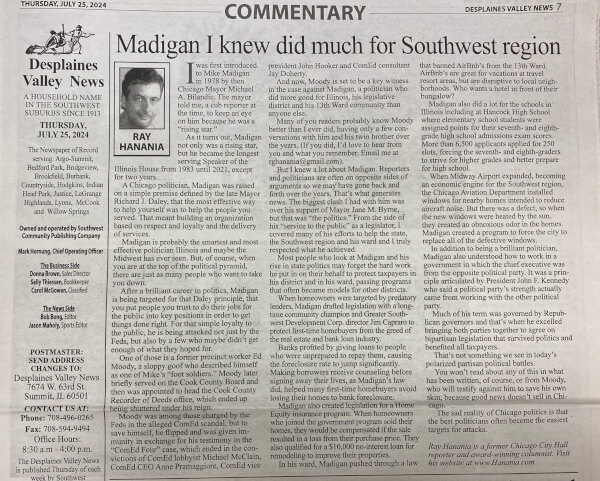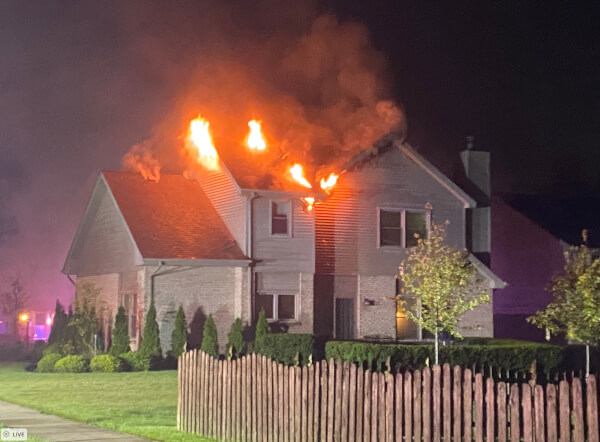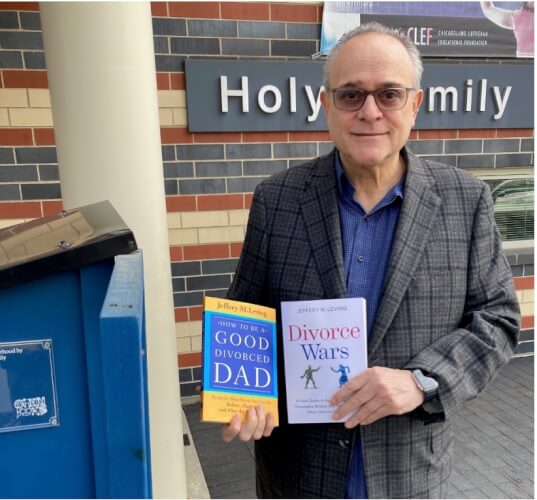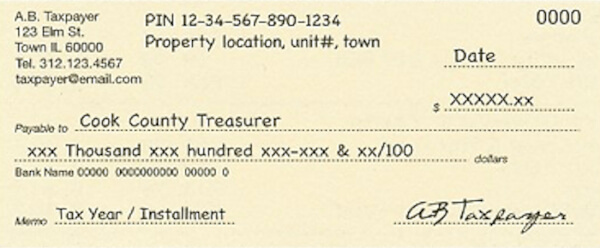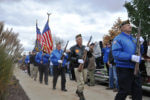Midnight Flight: Chapter 5 — Black is Bad
One family’s experience of White Flight and the racial transformation of Chicago’s South Side (an online novel)
By Ray Hanania
Midnight Flight, (C) 1990-2018 Ray Hanania, All Rights Reserved
“I’m from Milwaukee, and I ought to know.
“It’s Blatz, Blatz, Blatz, Blatz, wherever you go.
“Blatz is the name you will always hear.
“Blatz is Milwaukee’s finest beer.”
— Blatz Commercial Jingle during The Amos n’ Andy Show
Blatz Brewing Co., Milwaukee, WI.
Our block at 89th and Luella Avenue was a very close knit collection of neighbors, reflecting the larger cohesiveness of our community, South Shore Valley.
In the 1960s, people didn’t speak of “spin control” or image perception outside of the field of professional advertising. Yet, as a close community, we were more susceptible to being influenced by forces in the news media that, unknowingly, helped forge our misunderstandings not only about Black people, but also about the relative feelings the community shared of “security.”
In South Shore Valley, everyone knew each other. It was evident not only on the block level, but on the community level, too.
Bethany Lutheran Church is still standing at 92nd and Jeffery Avenue. 2017The tightness of the Jewish community was not only a model of community togetherness for us but an example of how organization can bring about successes.
Our block was a microcosm of our larger community’s success, one of many blocks where the mix of ethnicity, religion and a little racial diversity, made it easy for everyone to get along.
Despite ethnic diversity in our mix, we were all considered “White,” maybe strictly by virtue of the absence of Black families.
The closest Black families lived west of Stony Island Avenue, or far north of our community beyond CVS and into South Shore. You would not even see a Black person walking our streets. That was how White it was.
While we were individuals on most internal issues, we were monolithic in terms of issues outside of our community, such as our community subconscious perceptions of Black people.
Those perceptions were built not through direct experience or contact with Black people, but through images projected to us by the “media,” a growing field that included radio, newspapers, Hollywood movies and, most importantly, television.
The media defined how we viewed other people who were not a part of our community, and molded the terms and phrases that we used in our discussions.
Vernacular, in context is important to understand what happened then, and not confuse issues with today. We didn’t call Black people “Black,” back then, or, for that matter, “African Americans.” We called them what the media called them: “Colored.” That was how they were referred to in the early days, on TV, in school, in newspapers, and even in our homes. As a growing influence on society, reality was often what you heard or saw on TV.
By day in my school classes, I would learn about “New Math,” which was just as hard to understand as “old math.” There was also something called “Geometry” that was just starting to be taught in school.
But by night, sitting for hours mesmerized in front of the TV set, I would watch program after program where I learned about fears, how to “hate,” and where my definition of Black people was formed. Subtle and sometimes blunt messages based on race and ethnicity mixed to influence us in a powerful and difficult to challenge way. I still remember one movie where an actor sarcastically thanked his friend, saying, “That’s White of you.” And if “That’s White of you” was a compliment — as it was meant in this early 1950s film, obviously the opposite of that was “That’s Colored of you,” which clearly meant, by any reasonable deduction, as something that was bad.
We didn’t have to verbalize the words. It was how it was. Many things on television went unchallenged, because in a world built on conformity, our narrow definition of society was molded by peer pressure that was subtle, effective and difficult to challenge.
The homes on both sides of the streets in South Shore Valley reflected the conformity in styles of the 50s and early 60s. The homes were built in patterns of groupings of two, three or four matching styles together. People sought conformity. They desired consistency.
Conformity and easily identified patterns fed into our sense of security and safety.
Our two-story brick Georgian had a basement. There were four houses just like ours on both sides. The sidewalk went right down the center of the front of the property from the front steps. A smaller cement walk spun off the main sidewalk and wound to the side of the house and then to the backyard and then to the garage. We had a white picket fence that was just under four feet high. Our alley was paved. Many of the other blocks had paved alleys, too.
Further down the block were several ranch style homes, right next door to each other. Across the street were the modern, 50’s style bungalows, all grouped together one right after another.
There were items that reached back in our lives. In the alley, we also had what was supposed to have been a “modern” garbage container made of cement with a large metal flap door facing outward so the garbage could be scooped out using a shovel. There was a metal door on top to allow you to lift it and drop the garbage right in.
We had a “gangway.” Well, sort of. It wasn’t a gangway in the real sense of a typical bungalow-belt city neighborhood because South Shore Valley was not a typical community. Most of the homes had a little distance between them. So there was room to walk between them. And there was also a swatch of grass between them, too.
We didn’t cut our grass with a gasoline powered lawnmower. The rich kids used that. I had a small push lawnmower with the circular blades connected directed to the two large wheels on the side. The grass was clipped and tossed by the power of the blades turning as I pushed it across the lawn, onto an open grass cutting tray that snapped on the back under the long wood handle. The lawns were small but it seemed to take forever to cut the grass.
On the side of our house, common to many of the other homes there, was a small metal flap flushed to the ground that had once been used to allow for the delivery of coal. Coal truck drivers would pull up and open the flap and pour the coal bricks into the shoot which dropped to a container. The coal was fed into the coal furnace in the house. The furnace was later replaced with a gas powered heater. “State of the Art,” it was called. But the small metal door with the flap was one of those unexplained aspects of a home that we just never explored.
There was a zinc box next to our front door. The milkman would place two glass quarts of fresh milk in it on a regular schedule. Imagine trusting to have your milk delivered in that manner, today, not worrying that someone might tamper with it.
The short white picket fence divided our neighbors on the north, and a short metal chain linked fence divided the yard to our south. All the homes had small fences, high enough to distinguish each property, but low enough to encourage the kind of familiarity our neighbors had with each other.
Each week on Thursday, a man would walk down the middle of our street with a pushcart and large grinding wheel selling knives. All sorts of knives. Of any length. Sold to anyone, old and young, who could pay the 50 cents or 75 cents. Sometimes he would show us his collection of stilettos and switchblades, and dazzle us with the sharpness of a blade freshly ground on the spinning wheel.
This sense of security encouraged an excess of respect. I had been taught, from a very young age, to respect older people and I always referred to my neighbors as Mr. or Mrs.
“Hi Mrs. Morrow.” “Hi Mr. Morrow.” “Hi Mrs. Zurek.”
“Don’t call me Mrs. Zurek. Call me Frances.”
“Okay Mrs. Zurek.”
As a child, I was infatuation with the lady next door, Mrs. Morrow. She was tall and had blond hair. I thought she was beautiful, kind of like the TV and movie actress, Doris Day. It wasn’t sex, although I was sexually aware even at that young age. Kids were always joking about sex, and the real “cool” kids even bragged about having “sex,” usually consisting of “feeling up” their girl friends.
There was also a sense of community spirit. Dolores and Ken Morrow, our next door neighbors, had a baby boy right after John Glenn went up into space and circled the Earth three times. They named the boy Glenn in honor of this now famous astronaut.
“Thank God for John Glenn. Had he not circled the Earth, the Russians would certainly have controlled outer space and then our lives.”
It was a real belief. After all, only a few years earlier, the Russians sent the Sputnik up into Space, driving some homeowners to build backyard bunkers.
There was another, young married couple two houses south. I knew the mother, Janice, but never really remembered the father. They had a baby, too, and they named their young boy Scott, after another astronaut.
Along with safety, security, respect and community pride was also a sense of innocence. People were somewhat naive. Fear taught us to be cautious.
Astronauts and the fear of a Soviet nuclear attack were the great international issues that weighed heavy on the minds of our parents.
In school, we used to have both fire drills and nuclear attack drills, the latter consisting of getting out of our seats, forming a single file line, walking into the hall, squatting on the floor, and then, covering our heads to protect us from “the bomb.” This would go on for about 10 minutes and the teachers would walk up and down the line making sure all the kids did what they were told.
Of course, back then, no one ever told us about radiation and the inability of most people to protect themselves from it so easily. Certainly, squatting on the floor with our hands over our heads was not as productive as simply bending over and kissing our asses good-bye.
Despite the ineffectiveness of the drills, it did increase our awareness, and certainly fueled our fears of a nuclear attack and things that were “bad.”
Those outside fears fed our growing interest in science fiction and the belief that monsters existed.
Between astronauts and nuclear bomb scares, it wasn’t hard to figure out why we were so consumed with Hollywood movies about mutant monsters and aliens. Flash Gordon was a regular Sunday morning feature. He flew a silly looking, little silver space ship that seemed to float with smoke billowing out of its rear exhaust. It looked like an aircraft engine with small fins but it never seemed to dull the reality as our imaginations filled in all the blanks.
There was “Ming the Merciless,” and there was a White blond woman named Dale Evans. Ming was a dark skinned, dark eyed looking heathen with a goatee. It was a subtle form of racism that was deeply embedded in our social conscience.
Dark was bad!
Superman was White. He saved White women from evil looking, “dark” thugs. Most of the bad guys were run-of-the-mill criminals. But occasionally, the villain was an alien of sorts. Dark, of course. Black was sinister. White was right. Roy Rogers rode a beautiful “white” stallion named Trigger, like a gun.
One of the great horror movies of the time was “Creature from the Black Lagoon.” The monster didn’t come out of a “white lagoon” or even a “blue lagoon,” for that matter.
It was a “black lagoon.”
The big fad as a child was collecting Mars Attacks cards. The Martians were non-racial, and just plain scary looking man-like creatures with large exposed brains for heads and big, bulging eyes. Card Number 17 entitled “Beast and the Beauty” showed a space-suited, glass helmeted Martian breaking through the bedroom window of a home, grabbing a White woman with blond hair who was startled out her sleep and in a robe. Right out of her bed. No place was safe!
Card Number 21 entitled “Prize Capture” showed another Martian carrying away a screaming White woman, also with blond hair, screaming. Card Number 30 showed yet another White woman with, you guessed it, blond hair, caught on the Web of a Martian controlled monster spider. There were many others. Those scenes motivated you to want to seek revenge — justified revenge. And they quickly enraged our parents who protested. The Mars Attacks cards were banned almost as fast as they made it to Hilltop, the local store at the top of the hill on Chappel Avenue. I did manage to purchase enough of the packs of cards to complete at least one set. (Baseball cards with a wide stick of hard bubble gum inside, were very popular. The Mars Attacks cards were in the same form, glossy, multi-colored cover, with five cards and a broad stick of gum inside.)
Of course, there were many White villains, too. But the image of a dark person or thing threatening you fed a fear that we were conditioned by our society and the times to expect.
People just didn’t lie, they told “Black lies.” A “good” or innocent lie was a “White lie.” And that fear was even embedded in the toys we played with.
I always played with little toy soldiers, and Indians, and even monster figures. The Indians and the Monsters were always killed.
Sharon’s mother often would sew little tents for me that I could use for the plastic soldiers that I played with. All the green colored soldiers looked White. I don’t remember ever getting a green colored soldier that looked Black among the toys that my mom bought for me.
The earliest villains were Indians. And they were usually brown. My first big Christmas present that I got from my brother was Fort Apache, a collection of brown panels that formed a picket fenced wall, small look-out posts, post-Civil War soldiers in blue uniforms, and a lot of mangy, loin-clothed Indians. The soldiers were always positioned in passive mode. A few were positioned with their rifles ready. It was based on the TV show, Fort Apache.
The Indians, on the other hand, were always angry, their arms up in the air swinging tomahawks or shooting arrows. I don’t recall or believe I ever wanted, for that matter, a toy Indian that was passive or smoking a peace pipe.
Without realizing it, the television of the late 50s and 60s had started to mold our subconscious attitudes about race. We were being taught, subtly, who the enemy was. And the enemy had a dark face, dark skin and was a dark person. Dark meant bad.
The good guys wore “White hats,” the bad guys wore “Black hats.” Black and White. It was an easy way to tell the difference between good and bad.
We were also slowly being conditioned into believing that we lived in a world of impending disasters and dark threats. We were being taught how to protect ourselves by fearing and preparing against those whom we feared. These threats were local and international. We didn’t know it then, but it was happening just by watching the TV.
The most innocent programs conveyed these messages vividly on the TV.
An early episode of Andy of Mayberry (December, 1960) told the funny story of two little old white-haired White ladies who had snitched on another man who was making gin and whiskey in his home. They passed the information on to Sheriff Taylor and Deputy Fife who quickly went to his home, breaking his gin processor and placing him in their hometown jail.
The punch line was, of course, that the two little, innocent old ladies with the white hair were actually running a gin business of their own. At one point in the show, totally gratuitously, a dark-skinned man walked in with his arms out asking (without speaking) for the ladies to sell him a bottle of their hooch.
They gladly complied, giving him a bottle. Then, they proceeded to talk about the man calling him a “Mohammaden” an early term used to describe Muslims or people who believed in Islam and its Prophet, Muhammad. And one of the little old ladies suggested that “they” loved to drink and could always be depended upon to purchase their secret cache of liquor. The Moslem man, after receiving his bottle, backed out of the room and the scene slowly, bowing with his hands clasped. He had a crazed look on his dark face. His dark eyes were wide open.
No wonder people didn’t like Moslems (Muslims), or Arabs or, for that matter, anyone who was dark. Why would they put it on the TV if it wasn’t true?
There were dozens of similarly popular TV programs that also included gratuitously racist portrayals of other ethnic groups, not the least of which was Amos n’ Andy. The slur-spoken, shuffling George “Kingfish” Stevens constantly evoked images of ignorance as he conspired with his two friends, small cab company owner Amos, and his heavy-set, derby-sporting partner, Andrew “Andy” Brown. It was always to the chagrin of his Kingfish’s wife, Sapphire. The show was billed as comedy by the sponsors, the Blatz Brewing Company of Milwaukee, Wisconsin, and it delighted millions of White audiences around the country. In fact, the show was distributed to our Armed Forces during the Korean War. But Blacks cringed helplessly at Kingfish’s vernacular: “You being what you is, and I being what I is.” Or, “Dis is the smartest thing I ever done pulled.”
The producer, James Fonda, must have felt some guilt about the show’s portrayals, because he intentionally framed the show around other programs he hoped would be placed in comparison. The introduction to the show, over a solemn chorus in the background, began, “Out of the library of American folklore, those treasured stories of Huck Finn, Paul Bunyan and Rip Van Winkle, which has brought us laughter and joy for generations come the warm, lovable tales of Amos and Andy.”
Of course, the focus was rarely on Amos, the owner of a small taxi cab company and who served during the show as the wise counsel to Kingfish. Instead, the show focused on the hapless and seemingly jobless Kingfish, and on his cigar-smoking co-conspirator, Andy, who always seemed to put his smoldering cigar stogie in his left suit pocket during confrontations.
Fonda could have compared the show more accurately to Jackie Gleason’s The Honeymooners, which offered negative stereotypes of “White Trash” but Gleason and his larger audience following would certainly have complained, and loudly.
The show was never intended to entertain Black audiences, though. It was designed to exploit Black stereotypes as a foundation for the show’s intended humor which catered to a White audience. During the commercials, Blatz would feature White people talking about building new homes, sharing stories of employment and career success, and raising their families. All the while enjoying Blatz Beer which was as “mellow and friendly as our home itself.”
The Amos n’ Andy Show was funny, to White people. It was funny, to people who were not of color. It was funny, to people who were not the subject of ridicule.
As a media, television had a way of justify the ridicule of minorities such as Blacks. It made you feel comfortable in the practice of making fun of someone else, or justified your sense of fearing “someone else,” as long as it wasn’t you. It even reassured you that it wasn’t you.
While an invasion from outer space, or a nuclear attack from those sinister Soviets like Nikita Kruschev, was life threatening, it still was less of a concern to the families on our block than the real threat of the more sinister invasion.
“What if a Black family moved into the neighborhood?”
That was a threat, we were told, that you could not protect yourself from. The only solution was to not sell. We were a “neighborhood” and we would stick together.
Those “evil” Black people were not going to move into our neighborhood.
I had never really met a Black person, except informally. Sadly, not meeting someone is always a factor in reinforcing stereotypes. It’s always easier to hate someone you don’t know. It’s harder to hate a friend.
I saw Black people shopping along 87th Street near Stony Island Avenue, but I didn’t know them. One of the first Black people I did meet was a celebrity, Muhammad (Mohammed) Ali, who was still known then as Cassius Clay. Celebrity Black people were acceptable. Ali would drive his Lincoln Mark I to the Jewel where I worked as a teenager at 87th and Stony Island Avenue. Occasionally, I would carry out his grocery bags. He would point to me, the darkest kid working at the Jewel on 87th and Stony Island, and I would take his bags.
He had an Arab bodyguard Hassan Salameh, whose sister, Saluka, was a close friend of my mother. I didn’t know that until years later, though. Muhammad Ali didn’t seem to be “too evil.” He always gave me a $1 tip, which was huge considering grocery baggers only earned about $2.75 an hour back then. It was more than what I ever received from those non-sinister White customers, many of whom rarely would give me a tip for carrying out their bags.
Those days of grocery-store service are long gone. It was a part of our early culture that is long gone, too. Getting a clerk to bag your groceries while you paid the cashier was a challenge, let alone even thinking that one of the clerks might actually offer to push your cart or carry a few bags out for you to the car.
We were prepared for the Black invasion.
Several of the fathers had walked the neighborhood knocking on doors urging our parents not to sell their properties. Or, if they did, to let the committee organizers know and they would help them sell it to a decent, good White family. Not to the “Colored people.”
The idea of “Colored” people coming into our neighborhood took frightening dimensions in the summer of 1968 when the Rev. Martin Luther King, Jr., was assassinated.
Black people rioted throughout the city, we were told, although most of the damage and arson occurred in their own neighborhoods.
Our parents and community leaders warned of roving bands of Black youth driving around in their broken down jalopies cruising for trouble and confrontation with White kids. The rumors only fed the stereotypes and fears, widening the gap between our two communities, and helping to prepare normally docile families into symbols of racial hatred.
The only cars of teenagers I saw speeding down our street were cars filled with White teenagers, many from other areas of the city. They were looking for a fight, and as they drove by, the car screeched to a halt, and the teenagers jumped out and started fighting with my brother and his friends. They were High School seniors. I was amazed at how fast and furious they punched each other in their faces. My brother was considered tough. A hockey player and football star, John punched back as fast as the punches came in until my mother came running out yelling at the strangers to leave.
I don’t recall anyone talking about moving out when those kids threatened to return with more teenage friends to continue the fight.
Midnight Flight
Chapter 3: A Beautiful, Idyllic Community
Chapter 4: Written Long Before
Chapter 6: Alone in the Playground
Chapter 8: In the Eye of the Storm
Chapter 10: The Sub-Urban Life
Chapter 11: Friends Left Behind
Chapter 13: Notes from Readers



